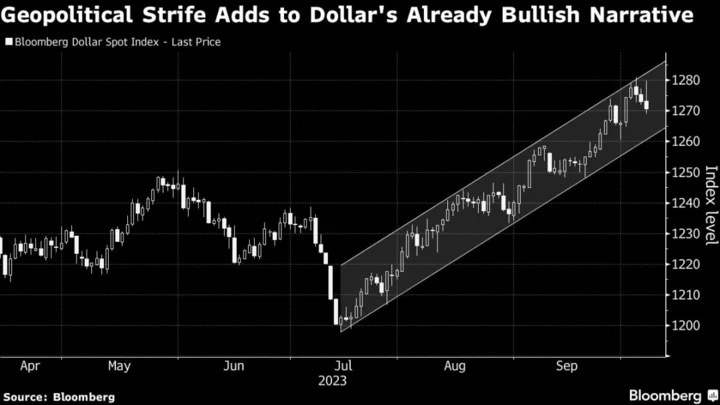The dollar climbed against its major peers in early trading on Monday as currency traders got their first chance to react to a shock attack by Hamas within Israel.
The greenback — long regarded as a haven in times of trouble — rose versus the euro and pound as trading began in Sydney, while riskier currencies including its Australian counterpart slipped. The yen — another favored refuge for investors — rallied.
Instability in the Middle East has the potential to add another leg to the dollar’s already stellar performance in recent months. That rally has put pressure on Japan’s yen, prompting talk of possible intervention, and reignited discussion in Europe about whether the euro could once again fall to parity.
“The path of least resistance over the very short term is dollar strength on lower risk appetite,” said Jason Wong, a Wellington-based currency strategist at Bank of New Zealand. But given the scope of the rally in the dollar, “there’s a reasonable chance it fizzles out relatively quickly.”
A Bloomberg gauge of the currency has advanced 1.9% since Dec. 31, setting the stage for a third straight year of gains. That would be the longest run since 2016.
The fallout from the attacks reverberated through Middle East markets on Sunday, sending stocks sliding and setting the tone for what’s likely to be a volatile start of the week. Major equities gauges in the region fell, led by a drop on Israel’s benchmark TA-35 stock index, which posted its biggest loss in more than three years, sliding 6.5%.
The dollar has benefited from the Federal Reserve’s aggressive interest-rate increases as well as resilience in the US economy. Still, a holiday for the US bond market on Monday could mute short-term gains for the dollar if investors are seeking it to invest in Treasuries; cash trading will reopen on Tuesday.
--With assistance from Vivianne Rodrigues.
Author: Rachel Evans and Michael G. Wilson

